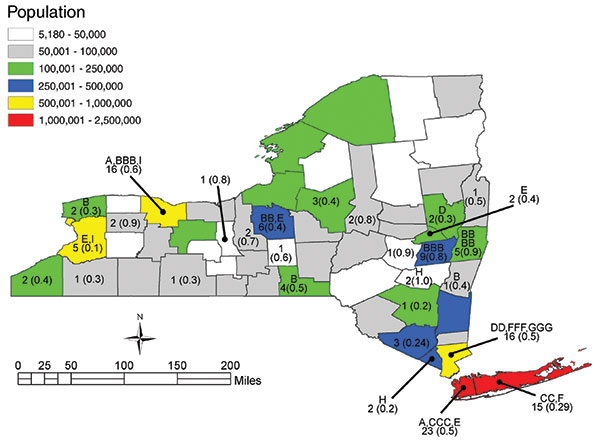Volume 9, Number 6—June 2003
Research
Molecular Subtyping to Detect Human Listeriosis Clusters
Figure 1

Figure 1. Dispersion of listeriosis cases, New York State (excluding New York City), November 1996–June 2000. Comparison of New York State population base overlaid with temporal listeriosis clusters from Table 1 (indicated by letter; defined by ribotype and pulsed-field gel electrophoresis type). Cases per county and annualized rate per 100,000 (in parentheses) are shown. New York City listeriosis data are not included in this study.
Page created: December 22, 2010
Page updated: December 22, 2010
Page reviewed: December 22, 2010
The conclusions, findings, and opinions expressed by authors contributing to this journal do not necessarily reflect the official position of the U.S. Department of Health and Human Services, the Public Health Service, the Centers for Disease Control and Prevention, or the authors' affiliated institutions. Use of trade names is for identification only and does not imply endorsement by any of the groups named above.